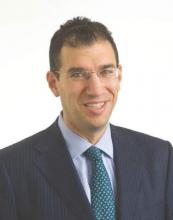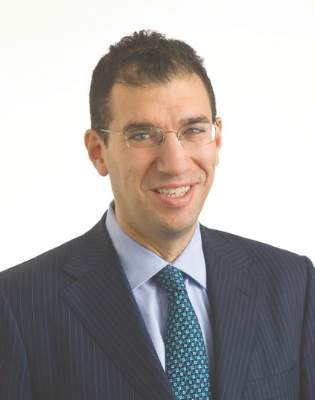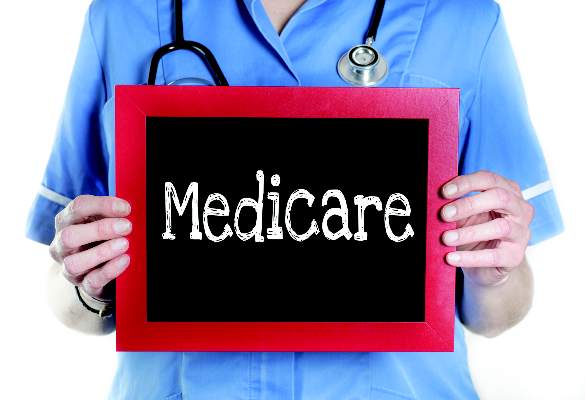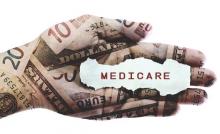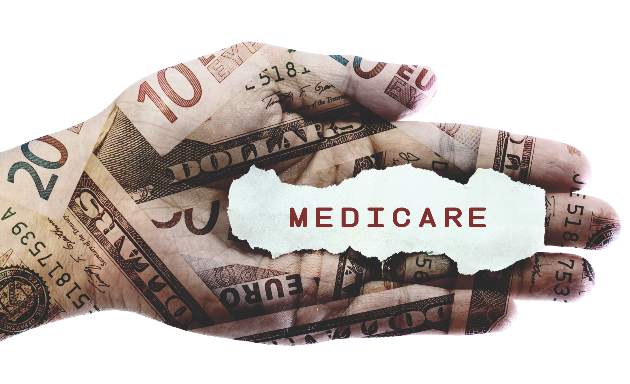User login
Study: One hour with patients means two hours on EHR
Physicians are spending twice as much time on electronic health records as they are face to face with patients, according to a new study by the American Medical Association.
Researchers observed 57 physicians in four specialties (family medicine, internal medicine, cardiology, and orthopedics) and found that for every hour of direct clinical face time with patients, nearly 2 additional hours is spent on EHR and desk work within the clinic day. Additionally, based on diaries kept by 21 of the participating physicians, another 1-2 hours of personal time were spent each night doing additional computer and clerical work, according to the study published Sept. 5 in Annals of Internal Medicine (2016. doi: 10.7326/M16-0961).
“Over the years, doctors have recognized that more and more of their time was spent on nonpatient care, activities but probably haven’t recognized the magnitude of that change,” Christine Sinsky, MD, vice president of professional satisfaction at the AMA and lead author on the study, said in an interview. “Our study was able to help to quantify that and paint that picture.”
Overall, physicians spent 27% of their day dealing directly with patients, while 49% of the time was spent on EHR and desk work. In the examination room with patients, physicians spent 53% of time on direct clinical face time and 37% on EHR and desk work.
The situation “is the cumulative effect of many, many well-intended efforts that individually might have made sense, but taken collectively have paradoxically made it harder for physicians to deliver quality of care and harder for patients to get the quality of care they deserve,” she said.
EHR development should be focused on reducing the time-cost of providing care on their platforms, Dr. Sinsky recommended.
She noted that for her practice, it takes 32 clicks to order and record a flu shot. “I think vendors have a responsibility to minimize time, to minimize clicks involved in a task.”
She added that “regulators have a responsibility to not just add more and more regulations without first identifying the time-cost of complying with that regulation and without adding up the total cost of complying with regulation.”
Future regulations on EHRs must add flexibility when it comes to who is entering information into the system, she said. “Many regulations are either written with the explicit statement – or it is implied or an institution might overinterpret the regulation – that the physician is the one who must do the keyboarding into the record,” she said, noting that although not primarily studied in the research, preliminary data suggests that doctors who had documentation support were able to spend more time with their patients.
Finally, physicians themselves need to be stronger advocates for the changes they need to enable them to better serve their patients.
In addition to Dr. Sinsky, three other study authors are employed by AMA, which funded the study. No other financial conflicts were reported.
Physicians are spending twice as much time on electronic health records as they are face to face with patients, according to a new study by the American Medical Association.
Researchers observed 57 physicians in four specialties (family medicine, internal medicine, cardiology, and orthopedics) and found that for every hour of direct clinical face time with patients, nearly 2 additional hours is spent on EHR and desk work within the clinic day. Additionally, based on diaries kept by 21 of the participating physicians, another 1-2 hours of personal time were spent each night doing additional computer and clerical work, according to the study published Sept. 5 in Annals of Internal Medicine (2016. doi: 10.7326/M16-0961).
“Over the years, doctors have recognized that more and more of their time was spent on nonpatient care, activities but probably haven’t recognized the magnitude of that change,” Christine Sinsky, MD, vice president of professional satisfaction at the AMA and lead author on the study, said in an interview. “Our study was able to help to quantify that and paint that picture.”
Overall, physicians spent 27% of their day dealing directly with patients, while 49% of the time was spent on EHR and desk work. In the examination room with patients, physicians spent 53% of time on direct clinical face time and 37% on EHR and desk work.
The situation “is the cumulative effect of many, many well-intended efforts that individually might have made sense, but taken collectively have paradoxically made it harder for physicians to deliver quality of care and harder for patients to get the quality of care they deserve,” she said.
EHR development should be focused on reducing the time-cost of providing care on their platforms, Dr. Sinsky recommended.
She noted that for her practice, it takes 32 clicks to order and record a flu shot. “I think vendors have a responsibility to minimize time, to minimize clicks involved in a task.”
She added that “regulators have a responsibility to not just add more and more regulations without first identifying the time-cost of complying with that regulation and without adding up the total cost of complying with regulation.”
Future regulations on EHRs must add flexibility when it comes to who is entering information into the system, she said. “Many regulations are either written with the explicit statement – or it is implied or an institution might overinterpret the regulation – that the physician is the one who must do the keyboarding into the record,” she said, noting that although not primarily studied in the research, preliminary data suggests that doctors who had documentation support were able to spend more time with their patients.
Finally, physicians themselves need to be stronger advocates for the changes they need to enable them to better serve their patients.
In addition to Dr. Sinsky, three other study authors are employed by AMA, which funded the study. No other financial conflicts were reported.
Physicians are spending twice as much time on electronic health records as they are face to face with patients, according to a new study by the American Medical Association.
Researchers observed 57 physicians in four specialties (family medicine, internal medicine, cardiology, and orthopedics) and found that for every hour of direct clinical face time with patients, nearly 2 additional hours is spent on EHR and desk work within the clinic day. Additionally, based on diaries kept by 21 of the participating physicians, another 1-2 hours of personal time were spent each night doing additional computer and clerical work, according to the study published Sept. 5 in Annals of Internal Medicine (2016. doi: 10.7326/M16-0961).
“Over the years, doctors have recognized that more and more of their time was spent on nonpatient care, activities but probably haven’t recognized the magnitude of that change,” Christine Sinsky, MD, vice president of professional satisfaction at the AMA and lead author on the study, said in an interview. “Our study was able to help to quantify that and paint that picture.”
Overall, physicians spent 27% of their day dealing directly with patients, while 49% of the time was spent on EHR and desk work. In the examination room with patients, physicians spent 53% of time on direct clinical face time and 37% on EHR and desk work.
The situation “is the cumulative effect of many, many well-intended efforts that individually might have made sense, but taken collectively have paradoxically made it harder for physicians to deliver quality of care and harder for patients to get the quality of care they deserve,” she said.
EHR development should be focused on reducing the time-cost of providing care on their platforms, Dr. Sinsky recommended.
She noted that for her practice, it takes 32 clicks to order and record a flu shot. “I think vendors have a responsibility to minimize time, to minimize clicks involved in a task.”
She added that “regulators have a responsibility to not just add more and more regulations without first identifying the time-cost of complying with that regulation and without adding up the total cost of complying with regulation.”
Future regulations on EHRs must add flexibility when it comes to who is entering information into the system, she said. “Many regulations are either written with the explicit statement – or it is implied or an institution might overinterpret the regulation – that the physician is the one who must do the keyboarding into the record,” she said, noting that although not primarily studied in the research, preliminary data suggests that doctors who had documentation support were able to spend more time with their patients.
Finally, physicians themselves need to be stronger advocates for the changes they need to enable them to better serve their patients.
In addition to Dr. Sinsky, three other study authors are employed by AMA, which funded the study. No other financial conflicts were reported.
FROM ANNALS OF INTERNAL MEDICINE
CMS offers lower-stress reporting options for MACRA in 2017
Physicians will have options for when they can start meeting the requirements for the Merit-based Incentive Payment System (MIPS) track under regulations that implement the Medicare Access and CHIP Reauthorization Act.
The options are designed to allow physicians a variety of ways to get started with the new Quality Payment Program – the term CMS has given the MACRA-legislated reforms – and provide more limited ways to participate in 2017.
Option 1: Test the quality payment program in 2017 by submitting data without facing any negative payment adjustments. This will give physicians the year to make sure their processes are in place and ready for broader participation in 2018 and beyond.
Option 2: Delay the start of the performance period and participate for just part of 2017. Depending on how long a physician delays reporting quality information back to CMS, they could still qualify for a smaller bonus payment.
Option 3: Participate for the entire calendar year as called for by the law and be eligible for the full participation bonuses.
Option 4: For those who qualify, participate in an Advanced Alternative Payment Model (APM) beginning next year.
The final regulations for implementing MACRA will be released on Nov. 1, CMS Acting Administrator Andy Slavitt wrote in a blog post published Sept. 8.
“However you choose to participate in 2017, we will have resources available to assist you and walk you through what needs to be done,” Mr. Slavitt wrote.
Physicians will have options for when they can start meeting the requirements for the Merit-based Incentive Payment System (MIPS) track under regulations that implement the Medicare Access and CHIP Reauthorization Act.
The options are designed to allow physicians a variety of ways to get started with the new Quality Payment Program – the term CMS has given the MACRA-legislated reforms – and provide more limited ways to participate in 2017.
Option 1: Test the quality payment program in 2017 by submitting data without facing any negative payment adjustments. This will give physicians the year to make sure their processes are in place and ready for broader participation in 2018 and beyond.
Option 2: Delay the start of the performance period and participate for just part of 2017. Depending on how long a physician delays reporting quality information back to CMS, they could still qualify for a smaller bonus payment.
Option 3: Participate for the entire calendar year as called for by the law and be eligible for the full participation bonuses.
Option 4: For those who qualify, participate in an Advanced Alternative Payment Model (APM) beginning next year.
The final regulations for implementing MACRA will be released on Nov. 1, CMS Acting Administrator Andy Slavitt wrote in a blog post published Sept. 8.
“However you choose to participate in 2017, we will have resources available to assist you and walk you through what needs to be done,” Mr. Slavitt wrote.
Physicians will have options for when they can start meeting the requirements for the Merit-based Incentive Payment System (MIPS) track under regulations that implement the Medicare Access and CHIP Reauthorization Act.
The options are designed to allow physicians a variety of ways to get started with the new Quality Payment Program – the term CMS has given the MACRA-legislated reforms – and provide more limited ways to participate in 2017.
Option 1: Test the quality payment program in 2017 by submitting data without facing any negative payment adjustments. This will give physicians the year to make sure their processes are in place and ready for broader participation in 2018 and beyond.
Option 2: Delay the start of the performance period and participate for just part of 2017. Depending on how long a physician delays reporting quality information back to CMS, they could still qualify for a smaller bonus payment.
Option 3: Participate for the entire calendar year as called for by the law and be eligible for the full participation bonuses.
Option 4: For those who qualify, participate in an Advanced Alternative Payment Model (APM) beginning next year.
The final regulations for implementing MACRA will be released on Nov. 1, CMS Acting Administrator Andy Slavitt wrote in a blog post published Sept. 8.
“However you choose to participate in 2017, we will have resources available to assist you and walk you through what needs to be done,” Mr. Slavitt wrote.
ACOs score slight bump in bonus payments
Accountable care organizations participating in the Medicare Shared Savings Program generated $466 million in savings in 2015, up from $411 million in 2014, the Centers for Medicare & Medicaid Services announced.
Despite the growth in savings, there was little growth in the number of ACOs that qualified for bonus payments based on the savings they were able to generate.
Of 392 participants in Medicare Shared Savings Programand 12 Pioneer ACO Model participants, 31% (125) received bonus payments in 2015, as compared with 27% (97 organizations from a pool of 20 Pioneer ACOs and 333 ACO shared savings program participants) in 2014, according to a CMS report.
The agency noted that another 83 ACOs in the Shared Savings Program and two Pioneer ACOs generated savings in 2015 but did not qualify for bonus payments. Of the four Pioneer ACOs that recorded losses, only one incurred losses great enough to require payment to CMS.
On the quality side, the mean quality score among Pioneer ACOs increased to 92% in 2015, the fourth year of the program, up from 87% in 2014. Quality scores have risen each year, with a growth of 21% from the first year.
Participants in the Shared Savings Program that reported quality measures in both 2014 and 2015 improved on 84% of the quality measures that were reported in both years. In four measures – screening risk for future falls, depression screening and follow-up, blood pressure screening and follow-up, and administering pneumonia vaccine – the average quality performance improvement was more than 15% year-over-year.
The National Association of ACOs said it was “disappointed” in the small bump in financial bonuses.
“The results are not as strong as we, and many of our ACO members, had hoped for,” NAACOS President and CEO Clif Gaus, ScD, said in a statement. “But overall, we are pleased to see the results show a positive trend for the program,” noting that despite being only a few years old, the the participating ACOs “have accomplished a lot to reduce cost and improve quality.”
Accountable care organizations participating in the Medicare Shared Savings Program generated $466 million in savings in 2015, up from $411 million in 2014, the Centers for Medicare & Medicaid Services announced.
Despite the growth in savings, there was little growth in the number of ACOs that qualified for bonus payments based on the savings they were able to generate.
Of 392 participants in Medicare Shared Savings Programand 12 Pioneer ACO Model participants, 31% (125) received bonus payments in 2015, as compared with 27% (97 organizations from a pool of 20 Pioneer ACOs and 333 ACO shared savings program participants) in 2014, according to a CMS report.
The agency noted that another 83 ACOs in the Shared Savings Program and two Pioneer ACOs generated savings in 2015 but did not qualify for bonus payments. Of the four Pioneer ACOs that recorded losses, only one incurred losses great enough to require payment to CMS.
On the quality side, the mean quality score among Pioneer ACOs increased to 92% in 2015, the fourth year of the program, up from 87% in 2014. Quality scores have risen each year, with a growth of 21% from the first year.
Participants in the Shared Savings Program that reported quality measures in both 2014 and 2015 improved on 84% of the quality measures that were reported in both years. In four measures – screening risk for future falls, depression screening and follow-up, blood pressure screening and follow-up, and administering pneumonia vaccine – the average quality performance improvement was more than 15% year-over-year.
The National Association of ACOs said it was “disappointed” in the small bump in financial bonuses.
“The results are not as strong as we, and many of our ACO members, had hoped for,” NAACOS President and CEO Clif Gaus, ScD, said in a statement. “But overall, we are pleased to see the results show a positive trend for the program,” noting that despite being only a few years old, the the participating ACOs “have accomplished a lot to reduce cost and improve quality.”
Accountable care organizations participating in the Medicare Shared Savings Program generated $466 million in savings in 2015, up from $411 million in 2014, the Centers for Medicare & Medicaid Services announced.
Despite the growth in savings, there was little growth in the number of ACOs that qualified for bonus payments based on the savings they were able to generate.
Of 392 participants in Medicare Shared Savings Programand 12 Pioneer ACO Model participants, 31% (125) received bonus payments in 2015, as compared with 27% (97 organizations from a pool of 20 Pioneer ACOs and 333 ACO shared savings program participants) in 2014, according to a CMS report.
The agency noted that another 83 ACOs in the Shared Savings Program and two Pioneer ACOs generated savings in 2015 but did not qualify for bonus payments. Of the four Pioneer ACOs that recorded losses, only one incurred losses great enough to require payment to CMS.
On the quality side, the mean quality score among Pioneer ACOs increased to 92% in 2015, the fourth year of the program, up from 87% in 2014. Quality scores have risen each year, with a growth of 21% from the first year.
Participants in the Shared Savings Program that reported quality measures in both 2014 and 2015 improved on 84% of the quality measures that were reported in both years. In four measures – screening risk for future falls, depression screening and follow-up, blood pressure screening and follow-up, and administering pneumonia vaccine – the average quality performance improvement was more than 15% year-over-year.
The National Association of ACOs said it was “disappointed” in the small bump in financial bonuses.
“The results are not as strong as we, and many of our ACO members, had hoped for,” NAACOS President and CEO Clif Gaus, ScD, said in a statement. “But overall, we are pleased to see the results show a positive trend for the program,” noting that despite being only a few years old, the the participating ACOs “have accomplished a lot to reduce cost and improve quality.”
Many NCCN guideline authors reporting financial conflicts of interest
More than 85% of 125 authors of guidelines published by the National Comprehensive Cancer Network reported financial conflicts of interest (FCOI) at the end of 2014, according to newly published research.
Using information in the Centers for Medicare & Medicaid Services’ Open Payments database, researchers found that authors received on average $10,011 in general payments for consulting, meals, lodging, and similar transfers of value. Authors also received on average $236,066 in industry research payments, including funding associated with clinical trials. Approximately 84% of authors received general payments, while 47% received research payments.
“Our study demonstrates the high prevalence and significant monetary value of FCOIs among oncologist guideline authors,” Aaron Mitchell, MD, of the University of North Carolina at Chapel Hill, and colleagues, said in a study published online in JAMA Oncology (2016 Aug. 25. doi: 10.1001/jamaoncol.2016.2710).
However, study authors note that, in regards to research funding, “accepting research funding is all but mandatory for an academic clinical trialist.”
The overall impact of the financial conflicts of interest is not known, though. “More research is needed to determine which kinds of relationships are more likely to produce the unwanted consequences of physician bias to create rational, evidence-based policies that allow for the participation of key clinical experts while managing real or perceived conflicts,” Dr. Mitchell and his colleagues said. “Given the prevalence of FCOIs reported here, finding the answer to this question is critical.”
The need for more research was echoed in a separate commentary published the same day in JAMA Oncology.
“While these relationships are often necessary to bring advancements to the field, further research is needed to better understand the consequences of FCOIs (both positive and negative) and how best to manage and report FCOIs in both research and clinical practice,” Ryan Nipp, MD, and Beverly Moy, MD, both of Massachusetts General Hospital Cancer Center, Boston, write in their commentary (2016 Aug. 25. doi: 10.1001/jamaoncol.2016.2726).
“Clearly, FCOI policies should include accessible and transparent rules for management and enforcement of FCOIs, and this creates an urgent need for evidence to inform these policies,” they continue, suggesting the oncology community is more concerned with stock ownership and participation in speaker bureaus than with meals or uncompensated consulting.
“Therefore, policies regarding FCOI disclosure may need to go beyond just disclosing every industry relationship and should consider the relative harm or importance of the FCOI.”
The authors reported no relevant conflicts of interest.
Too much disclosure information at ASCO
A change in disclosure policy at the American Society of Clinical Oncology from relevant to all financial conflicts of interest has resulted in an increased amount of disclosed FCOIs and information overload.
Researchers examining 469 presentations given by 458 speakers in 2014 and 2015 ASCO annual meetings saw an increase in the number of speakers with at least one conflict of interest from 124 of 242 in 2014 to 151 of 216 in 2015. The median number of disclosures increased from one to three during that same time. The amount of disclosures that was considered “information overload” measured as the amount of words on a presentation slide without enough time to read/comprehend the information grew from 37 of 248 presentations (14.9%) to 83 of 221 (37.6%).
“Our findings raise concern about whether current disclosure protocols constitute meaningful disclosure,” Aaron Boothby of the Oregon Health & Science University, Portland, and colleagues wrote in a research letter published Aug. 25 in JAMA Oncology (2016 Aug. 25. doi: 10.1001/jamaoncol.2016.2706).
“The solution would be to extend the time of the disclosure slide so that no slide exceeds established limits of reading speed,” the authors recommend. “Further investigation is needed on audience ability to process COI slides at professional meetings if disclosure is the major objective,” they said.
The authors reported no conflicts of interest.
More than 85% of 125 authors of guidelines published by the National Comprehensive Cancer Network reported financial conflicts of interest (FCOI) at the end of 2014, according to newly published research.
Using information in the Centers for Medicare & Medicaid Services’ Open Payments database, researchers found that authors received on average $10,011 in general payments for consulting, meals, lodging, and similar transfers of value. Authors also received on average $236,066 in industry research payments, including funding associated with clinical trials. Approximately 84% of authors received general payments, while 47% received research payments.
“Our study demonstrates the high prevalence and significant monetary value of FCOIs among oncologist guideline authors,” Aaron Mitchell, MD, of the University of North Carolina at Chapel Hill, and colleagues, said in a study published online in JAMA Oncology (2016 Aug. 25. doi: 10.1001/jamaoncol.2016.2710).
However, study authors note that, in regards to research funding, “accepting research funding is all but mandatory for an academic clinical trialist.”
The overall impact of the financial conflicts of interest is not known, though. “More research is needed to determine which kinds of relationships are more likely to produce the unwanted consequences of physician bias to create rational, evidence-based policies that allow for the participation of key clinical experts while managing real or perceived conflicts,” Dr. Mitchell and his colleagues said. “Given the prevalence of FCOIs reported here, finding the answer to this question is critical.”
The need for more research was echoed in a separate commentary published the same day in JAMA Oncology.
“While these relationships are often necessary to bring advancements to the field, further research is needed to better understand the consequences of FCOIs (both positive and negative) and how best to manage and report FCOIs in both research and clinical practice,” Ryan Nipp, MD, and Beverly Moy, MD, both of Massachusetts General Hospital Cancer Center, Boston, write in their commentary (2016 Aug. 25. doi: 10.1001/jamaoncol.2016.2726).
“Clearly, FCOI policies should include accessible and transparent rules for management and enforcement of FCOIs, and this creates an urgent need for evidence to inform these policies,” they continue, suggesting the oncology community is more concerned with stock ownership and participation in speaker bureaus than with meals or uncompensated consulting.
“Therefore, policies regarding FCOI disclosure may need to go beyond just disclosing every industry relationship and should consider the relative harm or importance of the FCOI.”
The authors reported no relevant conflicts of interest.
Too much disclosure information at ASCO
A change in disclosure policy at the American Society of Clinical Oncology from relevant to all financial conflicts of interest has resulted in an increased amount of disclosed FCOIs and information overload.
Researchers examining 469 presentations given by 458 speakers in 2014 and 2015 ASCO annual meetings saw an increase in the number of speakers with at least one conflict of interest from 124 of 242 in 2014 to 151 of 216 in 2015. The median number of disclosures increased from one to three during that same time. The amount of disclosures that was considered “information overload” measured as the amount of words on a presentation slide without enough time to read/comprehend the information grew from 37 of 248 presentations (14.9%) to 83 of 221 (37.6%).
“Our findings raise concern about whether current disclosure protocols constitute meaningful disclosure,” Aaron Boothby of the Oregon Health & Science University, Portland, and colleagues wrote in a research letter published Aug. 25 in JAMA Oncology (2016 Aug. 25. doi: 10.1001/jamaoncol.2016.2706).
“The solution would be to extend the time of the disclosure slide so that no slide exceeds established limits of reading speed,” the authors recommend. “Further investigation is needed on audience ability to process COI slides at professional meetings if disclosure is the major objective,” they said.
The authors reported no conflicts of interest.
More than 85% of 125 authors of guidelines published by the National Comprehensive Cancer Network reported financial conflicts of interest (FCOI) at the end of 2014, according to newly published research.
Using information in the Centers for Medicare & Medicaid Services’ Open Payments database, researchers found that authors received on average $10,011 in general payments for consulting, meals, lodging, and similar transfers of value. Authors also received on average $236,066 in industry research payments, including funding associated with clinical trials. Approximately 84% of authors received general payments, while 47% received research payments.
“Our study demonstrates the high prevalence and significant monetary value of FCOIs among oncologist guideline authors,” Aaron Mitchell, MD, of the University of North Carolina at Chapel Hill, and colleagues, said in a study published online in JAMA Oncology (2016 Aug. 25. doi: 10.1001/jamaoncol.2016.2710).
However, study authors note that, in regards to research funding, “accepting research funding is all but mandatory for an academic clinical trialist.”
The overall impact of the financial conflicts of interest is not known, though. “More research is needed to determine which kinds of relationships are more likely to produce the unwanted consequences of physician bias to create rational, evidence-based policies that allow for the participation of key clinical experts while managing real or perceived conflicts,” Dr. Mitchell and his colleagues said. “Given the prevalence of FCOIs reported here, finding the answer to this question is critical.”
The need for more research was echoed in a separate commentary published the same day in JAMA Oncology.
“While these relationships are often necessary to bring advancements to the field, further research is needed to better understand the consequences of FCOIs (both positive and negative) and how best to manage and report FCOIs in both research and clinical practice,” Ryan Nipp, MD, and Beverly Moy, MD, both of Massachusetts General Hospital Cancer Center, Boston, write in their commentary (2016 Aug. 25. doi: 10.1001/jamaoncol.2016.2726).
“Clearly, FCOI policies should include accessible and transparent rules for management and enforcement of FCOIs, and this creates an urgent need for evidence to inform these policies,” they continue, suggesting the oncology community is more concerned with stock ownership and participation in speaker bureaus than with meals or uncompensated consulting.
“Therefore, policies regarding FCOI disclosure may need to go beyond just disclosing every industry relationship and should consider the relative harm or importance of the FCOI.”
The authors reported no relevant conflicts of interest.
Too much disclosure information at ASCO
A change in disclosure policy at the American Society of Clinical Oncology from relevant to all financial conflicts of interest has resulted in an increased amount of disclosed FCOIs and information overload.
Researchers examining 469 presentations given by 458 speakers in 2014 and 2015 ASCO annual meetings saw an increase in the number of speakers with at least one conflict of interest from 124 of 242 in 2014 to 151 of 216 in 2015. The median number of disclosures increased from one to three during that same time. The amount of disclosures that was considered “information overload” measured as the amount of words on a presentation slide without enough time to read/comprehend the information grew from 37 of 248 presentations (14.9%) to 83 of 221 (37.6%).
“Our findings raise concern about whether current disclosure protocols constitute meaningful disclosure,” Aaron Boothby of the Oregon Health & Science University, Portland, and colleagues wrote in a research letter published Aug. 25 in JAMA Oncology (2016 Aug. 25. doi: 10.1001/jamaoncol.2016.2706).
“The solution would be to extend the time of the disclosure slide so that no slide exceeds established limits of reading speed,” the authors recommend. “Further investigation is needed on audience ability to process COI slides at professional meetings if disclosure is the major objective,” they said.
The authors reported no conflicts of interest.
FROM JAMA ONCOLOGY
Sterilization rates decline for women despite coverage
Fewer women aged 20-44 years are using sterilization as their primary method of contraception, despite no-cost coverage of the procedure under the Affordable Care Act.
Sterilization rates in 2011-2013 for women in this age group was 25%, down from 27% in 2002, according to a new report from the Kaiser Family Foundation. Rates declined across income groups, dropping from 41% in 2002 to 37% in 2011-2013 for women whose incomes were up to 149% of the federal poverty level (FPL). For women with incomes within 150%-299% of the FPL, the rate declined from 33% to 28%, and for those at 300% or more of the FPL, the rate declined from 20% to 18%, according to the report.
While expanded coverage under the ACA may, in the long run, lead to greater use of sterilization by women, “it remains to be seen whether the growing availability of [long-acting reversible contraception] will offset this as IUDs and implants serve as semi-permanent substitutes for sterilization,” the Kaiser researchers wrote.
From 2011 to 2013, about 5% of men aged 15-44 years reported undergoing a vasectomy, according to Kaiser. The ACA does not require health plans to cover sterilization for men, but two states – Vermont and Maryland – have passed laws requiring coverage within their borders in the future.
Male sterilization rates increased with age (1% of those aged 15-34 years, compared with 13% of those aged 35-44 years), income (3% for those below 200% of the FPL, 5% for those 200%-399%, and 10% for those above 400%), and education (3% of those with up to a high school diploma/GED, 5% of those with some college, and 13% of those with at least a 4-year college degree). Comparative changes in male sterilization rates were not provided.
Fewer women aged 20-44 years are using sterilization as their primary method of contraception, despite no-cost coverage of the procedure under the Affordable Care Act.
Sterilization rates in 2011-2013 for women in this age group was 25%, down from 27% in 2002, according to a new report from the Kaiser Family Foundation. Rates declined across income groups, dropping from 41% in 2002 to 37% in 2011-2013 for women whose incomes were up to 149% of the federal poverty level (FPL). For women with incomes within 150%-299% of the FPL, the rate declined from 33% to 28%, and for those at 300% or more of the FPL, the rate declined from 20% to 18%, according to the report.
While expanded coverage under the ACA may, in the long run, lead to greater use of sterilization by women, “it remains to be seen whether the growing availability of [long-acting reversible contraception] will offset this as IUDs and implants serve as semi-permanent substitutes for sterilization,” the Kaiser researchers wrote.
From 2011 to 2013, about 5% of men aged 15-44 years reported undergoing a vasectomy, according to Kaiser. The ACA does not require health plans to cover sterilization for men, but two states – Vermont and Maryland – have passed laws requiring coverage within their borders in the future.
Male sterilization rates increased with age (1% of those aged 15-34 years, compared with 13% of those aged 35-44 years), income (3% for those below 200% of the FPL, 5% for those 200%-399%, and 10% for those above 400%), and education (3% of those with up to a high school diploma/GED, 5% of those with some college, and 13% of those with at least a 4-year college degree). Comparative changes in male sterilization rates were not provided.
Fewer women aged 20-44 years are using sterilization as their primary method of contraception, despite no-cost coverage of the procedure under the Affordable Care Act.
Sterilization rates in 2011-2013 for women in this age group was 25%, down from 27% in 2002, according to a new report from the Kaiser Family Foundation. Rates declined across income groups, dropping from 41% in 2002 to 37% in 2011-2013 for women whose incomes were up to 149% of the federal poverty level (FPL). For women with incomes within 150%-299% of the FPL, the rate declined from 33% to 28%, and for those at 300% or more of the FPL, the rate declined from 20% to 18%, according to the report.
While expanded coverage under the ACA may, in the long run, lead to greater use of sterilization by women, “it remains to be seen whether the growing availability of [long-acting reversible contraception] will offset this as IUDs and implants serve as semi-permanent substitutes for sterilization,” the Kaiser researchers wrote.
From 2011 to 2013, about 5% of men aged 15-44 years reported undergoing a vasectomy, according to Kaiser. The ACA does not require health plans to cover sterilization for men, but two states – Vermont and Maryland – have passed laws requiring coverage within their borders in the future.
Male sterilization rates increased with age (1% of those aged 15-34 years, compared with 13% of those aged 35-44 years), income (3% for those below 200% of the FPL, 5% for those 200%-399%, and 10% for those above 400%), and education (3% of those with up to a high school diploma/GED, 5% of those with some college, and 13% of those with at least a 4-year college degree). Comparative changes in male sterilization rates were not provided.
Nearly three-quarters of physician specialties saw compensation increases in 2015 – AMGA
Seventy-four percent of physician specialties saw increases in their compensation in 2015, led by emergency medicine, according to the American Medical Group Association.
Overall, the weighted average increase in median compensation across all physician specialties was 3.1%, according to the 2016 Medical Group Compensation and Productivity Survey. Results were based on responses from 260 medical groups representing more than 92,000 providers.
“Once again, we see that physician compensation in general has remained relatively flat, with an average increase around 3.0%,” AMGA President and CEO Donald Fisher, PhD, said in a statement.
“We’ve seen peaks in certain specialties, and dips in others, and much of this reflects the cyclical nature of health care economics,” he added. For example, data from the 2014 survey saw gastroenterology had the largest year-over-year increase and in the 2016 survey, it was one of four specialties to see a decrease in compensation.
Individual specialties seeing the largest median total compensation increase year over year include emergency medicine (9.65% to $355,280), cardiac/thoracic surgery (8.12% to $645,112), cardiology (6.88% to $483.653), and hypertension and nephrology (6.72% to $329,750). Total compensation captures base and variable compensation plus all voluntary salary reductions, but excludes fringe benefits and employer payments to any type of retirement, pension, SERP or tax-deferred profit-sharing plan.
Four specialties saw median decreases in their compensation, including dermatology (–4.27% to $434,520), ophthalmology (–4.17% to $385,149), cardiology-cath lab (–0.81% to $584,118), and gastroenterology (–0.16% to $505,194).
Seventy-four percent of physician specialties saw increases in their compensation in 2015, led by emergency medicine, according to the American Medical Group Association.
Overall, the weighted average increase in median compensation across all physician specialties was 3.1%, according to the 2016 Medical Group Compensation and Productivity Survey. Results were based on responses from 260 medical groups representing more than 92,000 providers.
“Once again, we see that physician compensation in general has remained relatively flat, with an average increase around 3.0%,” AMGA President and CEO Donald Fisher, PhD, said in a statement.
“We’ve seen peaks in certain specialties, and dips in others, and much of this reflects the cyclical nature of health care economics,” he added. For example, data from the 2014 survey saw gastroenterology had the largest year-over-year increase and in the 2016 survey, it was one of four specialties to see a decrease in compensation.
Individual specialties seeing the largest median total compensation increase year over year include emergency medicine (9.65% to $355,280), cardiac/thoracic surgery (8.12% to $645,112), cardiology (6.88% to $483.653), and hypertension and nephrology (6.72% to $329,750). Total compensation captures base and variable compensation plus all voluntary salary reductions, but excludes fringe benefits and employer payments to any type of retirement, pension, SERP or tax-deferred profit-sharing plan.
Four specialties saw median decreases in their compensation, including dermatology (–4.27% to $434,520), ophthalmology (–4.17% to $385,149), cardiology-cath lab (–0.81% to $584,118), and gastroenterology (–0.16% to $505,194).
Seventy-four percent of physician specialties saw increases in their compensation in 2015, led by emergency medicine, according to the American Medical Group Association.
Overall, the weighted average increase in median compensation across all physician specialties was 3.1%, according to the 2016 Medical Group Compensation and Productivity Survey. Results were based on responses from 260 medical groups representing more than 92,000 providers.
“Once again, we see that physician compensation in general has remained relatively flat, with an average increase around 3.0%,” AMGA President and CEO Donald Fisher, PhD, said in a statement.
“We’ve seen peaks in certain specialties, and dips in others, and much of this reflects the cyclical nature of health care economics,” he added. For example, data from the 2014 survey saw gastroenterology had the largest year-over-year increase and in the 2016 survey, it was one of four specialties to see a decrease in compensation.
Individual specialties seeing the largest median total compensation increase year over year include emergency medicine (9.65% to $355,280), cardiac/thoracic surgery (8.12% to $645,112), cardiology (6.88% to $483.653), and hypertension and nephrology (6.72% to $329,750). Total compensation captures base and variable compensation plus all voluntary salary reductions, but excludes fringe benefits and employer payments to any type of retirement, pension, SERP or tax-deferred profit-sharing plan.
Four specialties saw median decreases in their compensation, including dermatology (–4.27% to $434,520), ophthalmology (–4.17% to $385,149), cardiology-cath lab (–0.81% to $584,118), and gastroenterology (–0.16% to $505,194).
Medicaid expansion leads to better access to care
Low-income adults living in two states that expanded Medicaid enrollment are showing significant increases in outpatient utilization and preventive care, improved health care quality, and reductions in emergency department use, compared with those living in a state that did not expand Medicaid, according to a new study.
The study also found similar improvements in care whether a state expanded traditional Medicaid or increased coverage through a private insurance option.
Benjamin D. Sommers, MD, PhD, of Harvard University, Boston, and his colleagues examined outcomes for nearly 9,000 low-income Medicaid enrollees in Kentucky (where officials expanded traditional Medicaid), Arkansas (where the state used funds to purchase private insurance to expand coverage), and Texas (which did not expand Medicaid) in November and December of 2013, 2014, and 2015. They looked specifically at changes in use of healthcare services, preventive care, and self-reported health (JAMA Intern Med. 2016 Aug 8. doi: 10.1001/jamainternmed.2016.4419).
“By the end of 2015, we found marked increases in coverage and reduced cost-related barriers to care in the expansion states, with associated increases in preventive care, outpatient visits, annual checkups, and chronic disease care, as well as decreased reliance on the [emergency department],” the researchers wrote.
They found that by 2015 there was a 6 percentage point drop in the likelihood of ED visits (P = 0.04), an increase of 0.69 office visits per person in the outpatient setting (P = 0.04), and an increase likelihood of getting a checkup (16.1 percentage points, P less than .001) in Medicaid expansion states. In Medicaid expansion states the share of adults obtaining regular care for chronic conditions increased by 12 percentage points after expansion (P = .008), compared with Texas. Additionally, adults reporting fair or poor quality of care dropped by 7.1 percentage points (P = .03).
One significant difference between the expansion states was changes in glucose monitoring rates for patients with diabetes were lower in Arkansas than Kentucky (–11.6 percentage points, P = .04).
“Of note, we found improvements in receipt of checkups, care for chronic conditions, and quality of care even in areas with primary care shortages, suggesting that while clinician capacity is undoubtedly an important consideration, insurance expansion can have a demonstrable positive impact even in areas with relative shortages, perhaps partially due to increased use of safety net providers,” the researchers added.
The study was supported by a research grant from the Commonwealth Fund and a grant from the Agency for Healthcare Research and Quality. The researchers reported having no financial disclosures.
Whether the premium assistance model proves to be durable and effective remains an open question. On the upside, the findings of Sommers et al suggest that the Arkansas initiative is living up to its promises. Moreover, the waiver seems to have increased the number of insurers participating in the marketplaces and contributed to lower premiums.
But other evidence concerning premium assistance waivers suggests the need for caution in assessing their effectiveness. The Government Accountability Office has questioned whether these waivers are budget neutral – a federal requirement. In this vein, the Congressional Budget Office has estimated that it will cost 50% more per enrollee to cover the expansion population on the exchanges than in the conventional Medicaid program. Nor are premium assistance waivers necessarily sustainable. In Pennsylvania, for instance, a newly elected Democratic governor worked to phase out that state’s existing alternative waiver, which had been negotiated by a prior Republican administration, in favor of a traditional expansion of the Medicaid entitlement.
Frank J. Thompson, PhD, and Joel C. Cantor, ScD, are both at Rutgers University in New Brunswick, N.J. They reported having no financial disclosures. Their comments were excerpted from a commentary in JAMA Internal Medicine (2016 Aug 8. doi: 10.1001/jamainternmed.2016.4422).
Whether the premium assistance model proves to be durable and effective remains an open question. On the upside, the findings of Sommers et al suggest that the Arkansas initiative is living up to its promises. Moreover, the waiver seems to have increased the number of insurers participating in the marketplaces and contributed to lower premiums.
But other evidence concerning premium assistance waivers suggests the need for caution in assessing their effectiveness. The Government Accountability Office has questioned whether these waivers are budget neutral – a federal requirement. In this vein, the Congressional Budget Office has estimated that it will cost 50% more per enrollee to cover the expansion population on the exchanges than in the conventional Medicaid program. Nor are premium assistance waivers necessarily sustainable. In Pennsylvania, for instance, a newly elected Democratic governor worked to phase out that state’s existing alternative waiver, which had been negotiated by a prior Republican administration, in favor of a traditional expansion of the Medicaid entitlement.
Frank J. Thompson, PhD, and Joel C. Cantor, ScD, are both at Rutgers University in New Brunswick, N.J. They reported having no financial disclosures. Their comments were excerpted from a commentary in JAMA Internal Medicine (2016 Aug 8. doi: 10.1001/jamainternmed.2016.4422).
Whether the premium assistance model proves to be durable and effective remains an open question. On the upside, the findings of Sommers et al suggest that the Arkansas initiative is living up to its promises. Moreover, the waiver seems to have increased the number of insurers participating in the marketplaces and contributed to lower premiums.
But other evidence concerning premium assistance waivers suggests the need for caution in assessing their effectiveness. The Government Accountability Office has questioned whether these waivers are budget neutral – a federal requirement. In this vein, the Congressional Budget Office has estimated that it will cost 50% more per enrollee to cover the expansion population on the exchanges than in the conventional Medicaid program. Nor are premium assistance waivers necessarily sustainable. In Pennsylvania, for instance, a newly elected Democratic governor worked to phase out that state’s existing alternative waiver, which had been negotiated by a prior Republican administration, in favor of a traditional expansion of the Medicaid entitlement.
Frank J. Thompson, PhD, and Joel C. Cantor, ScD, are both at Rutgers University in New Brunswick, N.J. They reported having no financial disclosures. Their comments were excerpted from a commentary in JAMA Internal Medicine (2016 Aug 8. doi: 10.1001/jamainternmed.2016.4422).
Low-income adults living in two states that expanded Medicaid enrollment are showing significant increases in outpatient utilization and preventive care, improved health care quality, and reductions in emergency department use, compared with those living in a state that did not expand Medicaid, according to a new study.
The study also found similar improvements in care whether a state expanded traditional Medicaid or increased coverage through a private insurance option.
Benjamin D. Sommers, MD, PhD, of Harvard University, Boston, and his colleagues examined outcomes for nearly 9,000 low-income Medicaid enrollees in Kentucky (where officials expanded traditional Medicaid), Arkansas (where the state used funds to purchase private insurance to expand coverage), and Texas (which did not expand Medicaid) in November and December of 2013, 2014, and 2015. They looked specifically at changes in use of healthcare services, preventive care, and self-reported health (JAMA Intern Med. 2016 Aug 8. doi: 10.1001/jamainternmed.2016.4419).
“By the end of 2015, we found marked increases in coverage and reduced cost-related barriers to care in the expansion states, with associated increases in preventive care, outpatient visits, annual checkups, and chronic disease care, as well as decreased reliance on the [emergency department],” the researchers wrote.
They found that by 2015 there was a 6 percentage point drop in the likelihood of ED visits (P = 0.04), an increase of 0.69 office visits per person in the outpatient setting (P = 0.04), and an increase likelihood of getting a checkup (16.1 percentage points, P less than .001) in Medicaid expansion states. In Medicaid expansion states the share of adults obtaining regular care for chronic conditions increased by 12 percentage points after expansion (P = .008), compared with Texas. Additionally, adults reporting fair or poor quality of care dropped by 7.1 percentage points (P = .03).
One significant difference between the expansion states was changes in glucose monitoring rates for patients with diabetes were lower in Arkansas than Kentucky (–11.6 percentage points, P = .04).
“Of note, we found improvements in receipt of checkups, care for chronic conditions, and quality of care even in areas with primary care shortages, suggesting that while clinician capacity is undoubtedly an important consideration, insurance expansion can have a demonstrable positive impact even in areas with relative shortages, perhaps partially due to increased use of safety net providers,” the researchers added.
The study was supported by a research grant from the Commonwealth Fund and a grant from the Agency for Healthcare Research and Quality. The researchers reported having no financial disclosures.
Low-income adults living in two states that expanded Medicaid enrollment are showing significant increases in outpatient utilization and preventive care, improved health care quality, and reductions in emergency department use, compared with those living in a state that did not expand Medicaid, according to a new study.
The study also found similar improvements in care whether a state expanded traditional Medicaid or increased coverage through a private insurance option.
Benjamin D. Sommers, MD, PhD, of Harvard University, Boston, and his colleagues examined outcomes for nearly 9,000 low-income Medicaid enrollees in Kentucky (where officials expanded traditional Medicaid), Arkansas (where the state used funds to purchase private insurance to expand coverage), and Texas (which did not expand Medicaid) in November and December of 2013, 2014, and 2015. They looked specifically at changes in use of healthcare services, preventive care, and self-reported health (JAMA Intern Med. 2016 Aug 8. doi: 10.1001/jamainternmed.2016.4419).
“By the end of 2015, we found marked increases in coverage and reduced cost-related barriers to care in the expansion states, with associated increases in preventive care, outpatient visits, annual checkups, and chronic disease care, as well as decreased reliance on the [emergency department],” the researchers wrote.
They found that by 2015 there was a 6 percentage point drop in the likelihood of ED visits (P = 0.04), an increase of 0.69 office visits per person in the outpatient setting (P = 0.04), and an increase likelihood of getting a checkup (16.1 percentage points, P less than .001) in Medicaid expansion states. In Medicaid expansion states the share of adults obtaining regular care for chronic conditions increased by 12 percentage points after expansion (P = .008), compared with Texas. Additionally, adults reporting fair or poor quality of care dropped by 7.1 percentage points (P = .03).
One significant difference between the expansion states was changes in glucose monitoring rates for patients with diabetes were lower in Arkansas than Kentucky (–11.6 percentage points, P = .04).
“Of note, we found improvements in receipt of checkups, care for chronic conditions, and quality of care even in areas with primary care shortages, suggesting that while clinician capacity is undoubtedly an important consideration, insurance expansion can have a demonstrable positive impact even in areas with relative shortages, perhaps partially due to increased use of safety net providers,” the researchers added.
The study was supported by a research grant from the Commonwealth Fund and a grant from the Agency for Healthcare Research and Quality. The researchers reported having no financial disclosures.
FROM JAMA INTERNAL MEDICINE
Key clinical point: Medicaid expansion improved self-reported health outcomes and access to care.
Major finding: By 2015 there was a 6 percentage point drop in the likelihood of emergency department visits (P = .04) and an increase of 0.69 outpatient office visits per person (P = .04).
Data source: A differences-in-differences analysis of survey data from Nov. 2013 through Dec. 2015 of 8,676 low-income adults in Kentucky, Arkansas, and Texas.
Disclosures: The study was supported by a research grant from the Commonwealth Fund and a grant from the Agency for Healthcare Research and Quality. The researchers reported having no financial disclosures.
Deals likely the way forward for Medicaid coverage of hepatitis C drugs
As state governments struggle to find a balance between access to hepatitis C drugs and being able to afford them, it appears that individual deals with drug manufacturers will be the way to get these drugs to a wider portion of the population.
Most recently, MassHealth, Massachusetts’ state Medicaid agency, negotiated with Gilead Sciences on new rebates that the agency said will “significantly” lower the cost on the hepatitis C drug Harvoni.
“I think it probably is the direction we are going in hepatitis C coverage,” Matt Salo, executive director of the National Association of Medicaid Directors (NAMD), said in an interivew. “Pricing has been a real challenge nationwide, certainly for Medicaid itself. Medicaid’s got an obligation to … like state budgets, balance a budget every single year. When we’ve got massive cost spikes in any one particular area, it generally tends to come with trade-offs you have to make elsewhere that aren’t necessarily in the best interest of everybody involved.”
According to the deal, Harvoni will be the exclusive drug used to treat hepatitis C for about 80% of patients in need. MassHealth also negotiated rebates for Gilead’s Sovaldi and Bristol-Myers Squibb’s Daklinza, which are indicated for about 20% of hepatitis C patients. The state expects to be able to cover most people in the state with hepatitis C.
Given the cost of hepatitis C drugs, which can reach into the $90,000 range for a course of treatment, state Medicaid agencies were putting access restrictions on the drug. However, as lawsuits were limiting states’ abilities to apply utilization management, negotiations with the drug companies became another avenue.
“When those lawsuits hit and were decided, most recently in Washington state and Delaware, it basically said and basically confirmed that Medicaid has to cover everybody,” Mr. Salo said. “That put the pricing issue right back in the forefront, because states like Massachusetts, Florida, and New York are going down this road of trying to figure out if we are going to open up coverage to everybody. How do we manage this?”
He noted that competition has helped make the price more manageable, but challenges still remain because of the cost of these drugs and prices still need to come down.
“Now that you’ve got three manufacturers – Gilead, AbbVie, and Merck – there is a little bit more of a competitive market at play,” Mr. Salo noted. “When the Merck product came on, they intentionally priced it lower than the other stuff in the market, which is good. These are all good things, but I still think the challenge we are going to face now is it’s still not gotten down to a price that’s low enough to really make it affordable to cover a million people in the Medicaid program.”
However, Mr. Salo said he does not see prices themselves coming down much further, unless perhaps a new competitor can come in and shake the market up further. As such, NAMD is looking toward legislative solutions to address the hepatitis C drug market.
He narrowed it down to three areas: price, cost, and access control.
Mr. Salo was quick to note that Congress doing something about price would look very much like price controls and would probably be a tough sell politically.
However, the federal government could help in other ways, such as creating a fund similar to the one the government uses to help pay for HIV/AIDS drugs.
“These are a bunch of things that wouldn’t touch on the manufacturers’ profit margin but might be things like an increased federal match for the drugs or perhaps creating a separate standalone federal program to provide hepatitis C treatments for patients much in the same way that Congress created the Ryan White program when it was clear that the cost of HIV/AIDS treatments were too much for the market to bear,” he said.
He also suggested that perhaps Medicare could help pay for the Medicaid coverage of hepatitis C drugs.
“If you think about cost savings to the system, the savings will be reaped by Medicare because it won’t be until those folks are 65 and older that the liver fibrosis and other types of things will really start to take effect,” he said. “Is there a way to bring Medicare in to offset some of the cost?”
Finally, he suggested Congress give state Medicaid agencies explicit authority to apply utilization management to help prioritize patients in need of these treatments.
As state governments struggle to find a balance between access to hepatitis C drugs and being able to afford them, it appears that individual deals with drug manufacturers will be the way to get these drugs to a wider portion of the population.
Most recently, MassHealth, Massachusetts’ state Medicaid agency, negotiated with Gilead Sciences on new rebates that the agency said will “significantly” lower the cost on the hepatitis C drug Harvoni.
“I think it probably is the direction we are going in hepatitis C coverage,” Matt Salo, executive director of the National Association of Medicaid Directors (NAMD), said in an interivew. “Pricing has been a real challenge nationwide, certainly for Medicaid itself. Medicaid’s got an obligation to … like state budgets, balance a budget every single year. When we’ve got massive cost spikes in any one particular area, it generally tends to come with trade-offs you have to make elsewhere that aren’t necessarily in the best interest of everybody involved.”
According to the deal, Harvoni will be the exclusive drug used to treat hepatitis C for about 80% of patients in need. MassHealth also negotiated rebates for Gilead’s Sovaldi and Bristol-Myers Squibb’s Daklinza, which are indicated for about 20% of hepatitis C patients. The state expects to be able to cover most people in the state with hepatitis C.
Given the cost of hepatitis C drugs, which can reach into the $90,000 range for a course of treatment, state Medicaid agencies were putting access restrictions on the drug. However, as lawsuits were limiting states’ abilities to apply utilization management, negotiations with the drug companies became another avenue.
“When those lawsuits hit and were decided, most recently in Washington state and Delaware, it basically said and basically confirmed that Medicaid has to cover everybody,” Mr. Salo said. “That put the pricing issue right back in the forefront, because states like Massachusetts, Florida, and New York are going down this road of trying to figure out if we are going to open up coverage to everybody. How do we manage this?”
He noted that competition has helped make the price more manageable, but challenges still remain because of the cost of these drugs and prices still need to come down.
“Now that you’ve got three manufacturers – Gilead, AbbVie, and Merck – there is a little bit more of a competitive market at play,” Mr. Salo noted. “When the Merck product came on, they intentionally priced it lower than the other stuff in the market, which is good. These are all good things, but I still think the challenge we are going to face now is it’s still not gotten down to a price that’s low enough to really make it affordable to cover a million people in the Medicaid program.”
However, Mr. Salo said he does not see prices themselves coming down much further, unless perhaps a new competitor can come in and shake the market up further. As such, NAMD is looking toward legislative solutions to address the hepatitis C drug market.
He narrowed it down to three areas: price, cost, and access control.
Mr. Salo was quick to note that Congress doing something about price would look very much like price controls and would probably be a tough sell politically.
However, the federal government could help in other ways, such as creating a fund similar to the one the government uses to help pay for HIV/AIDS drugs.
“These are a bunch of things that wouldn’t touch on the manufacturers’ profit margin but might be things like an increased federal match for the drugs or perhaps creating a separate standalone federal program to provide hepatitis C treatments for patients much in the same way that Congress created the Ryan White program when it was clear that the cost of HIV/AIDS treatments were too much for the market to bear,” he said.
He also suggested that perhaps Medicare could help pay for the Medicaid coverage of hepatitis C drugs.
“If you think about cost savings to the system, the savings will be reaped by Medicare because it won’t be until those folks are 65 and older that the liver fibrosis and other types of things will really start to take effect,” he said. “Is there a way to bring Medicare in to offset some of the cost?”
Finally, he suggested Congress give state Medicaid agencies explicit authority to apply utilization management to help prioritize patients in need of these treatments.
As state governments struggle to find a balance between access to hepatitis C drugs and being able to afford them, it appears that individual deals with drug manufacturers will be the way to get these drugs to a wider portion of the population.
Most recently, MassHealth, Massachusetts’ state Medicaid agency, negotiated with Gilead Sciences on new rebates that the agency said will “significantly” lower the cost on the hepatitis C drug Harvoni.
“I think it probably is the direction we are going in hepatitis C coverage,” Matt Salo, executive director of the National Association of Medicaid Directors (NAMD), said in an interivew. “Pricing has been a real challenge nationwide, certainly for Medicaid itself. Medicaid’s got an obligation to … like state budgets, balance a budget every single year. When we’ve got massive cost spikes in any one particular area, it generally tends to come with trade-offs you have to make elsewhere that aren’t necessarily in the best interest of everybody involved.”
According to the deal, Harvoni will be the exclusive drug used to treat hepatitis C for about 80% of patients in need. MassHealth also negotiated rebates for Gilead’s Sovaldi and Bristol-Myers Squibb’s Daklinza, which are indicated for about 20% of hepatitis C patients. The state expects to be able to cover most people in the state with hepatitis C.
Given the cost of hepatitis C drugs, which can reach into the $90,000 range for a course of treatment, state Medicaid agencies were putting access restrictions on the drug. However, as lawsuits were limiting states’ abilities to apply utilization management, negotiations with the drug companies became another avenue.
“When those lawsuits hit and were decided, most recently in Washington state and Delaware, it basically said and basically confirmed that Medicaid has to cover everybody,” Mr. Salo said. “That put the pricing issue right back in the forefront, because states like Massachusetts, Florida, and New York are going down this road of trying to figure out if we are going to open up coverage to everybody. How do we manage this?”
He noted that competition has helped make the price more manageable, but challenges still remain because of the cost of these drugs and prices still need to come down.
“Now that you’ve got three manufacturers – Gilead, AbbVie, and Merck – there is a little bit more of a competitive market at play,” Mr. Salo noted. “When the Merck product came on, they intentionally priced it lower than the other stuff in the market, which is good. These are all good things, but I still think the challenge we are going to face now is it’s still not gotten down to a price that’s low enough to really make it affordable to cover a million people in the Medicaid program.”
However, Mr. Salo said he does not see prices themselves coming down much further, unless perhaps a new competitor can come in and shake the market up further. As such, NAMD is looking toward legislative solutions to address the hepatitis C drug market.
He narrowed it down to three areas: price, cost, and access control.
Mr. Salo was quick to note that Congress doing something about price would look very much like price controls and would probably be a tough sell politically.
However, the federal government could help in other ways, such as creating a fund similar to the one the government uses to help pay for HIV/AIDS drugs.
“These are a bunch of things that wouldn’t touch on the manufacturers’ profit margin but might be things like an increased federal match for the drugs or perhaps creating a separate standalone federal program to provide hepatitis C treatments for patients much in the same way that Congress created the Ryan White program when it was clear that the cost of HIV/AIDS treatments were too much for the market to bear,” he said.
He also suggested that perhaps Medicare could help pay for the Medicaid coverage of hepatitis C drugs.
“If you think about cost savings to the system, the savings will be reaped by Medicare because it won’t be until those folks are 65 and older that the liver fibrosis and other types of things will really start to take effect,” he said. “Is there a way to bring Medicare in to offset some of the cost?”
Finally, he suggested Congress give state Medicaid agencies explicit authority to apply utilization management to help prioritize patients in need of these treatments.
CMS announces regions for Primary Care Plus demo
Fourteen regions across the United States have been selected to be a part of the 5-year Comprehensive Primary Care Plus (CPC+) initiative.
CPC+ is a public-private partnership aimed at improving quality of care by provide medical practices with upfront incentive payments to help allow doctors to offer more services that have not traditionally been paid, including detailed care coordination and telemedicine.
The regions selected by the Centers for Medicare & Medicaid Services include Arkansas, Colorado, Hawaii, the greater Kansas City region straddling both Kansas City and Missouri, Michigan, Montana, New Jersey, the North Hudson-Capital Region of New York, Ohio (statewide and Northern Kentucky region), Oklahoma, Oregon, the Greater Philadelphia region, Rhode Island, and Tennessee.
Practices in these regions must apply by Sept. 15, 2016.
“Regions were selected based on payer alignment and market density to ensure that CPC+ practices have sufficient payer supports to make fundamental changes in their primary care delivery,” according to a CMS fact sheet announcing the regions. “CMS has provisionally selected to partner with 57 payers in these regions throughout the 5-year model.”
Participants in the CPC+ initiative will get credit for being in an advanced alternative payment model and be eligible for bonus payments under the current proposal that operationalizes the Medicare Access and CHIP Reauthorization Act’s value-based payment system.
Information on CPC+, including how to apply for participation, can be found here.
Fourteen regions across the United States have been selected to be a part of the 5-year Comprehensive Primary Care Plus (CPC+) initiative.
CPC+ is a public-private partnership aimed at improving quality of care by provide medical practices with upfront incentive payments to help allow doctors to offer more services that have not traditionally been paid, including detailed care coordination and telemedicine.
The regions selected by the Centers for Medicare & Medicaid Services include Arkansas, Colorado, Hawaii, the greater Kansas City region straddling both Kansas City and Missouri, Michigan, Montana, New Jersey, the North Hudson-Capital Region of New York, Ohio (statewide and Northern Kentucky region), Oklahoma, Oregon, the Greater Philadelphia region, Rhode Island, and Tennessee.
Practices in these regions must apply by Sept. 15, 2016.
“Regions were selected based on payer alignment and market density to ensure that CPC+ practices have sufficient payer supports to make fundamental changes in their primary care delivery,” according to a CMS fact sheet announcing the regions. “CMS has provisionally selected to partner with 57 payers in these regions throughout the 5-year model.”
Participants in the CPC+ initiative will get credit for being in an advanced alternative payment model and be eligible for bonus payments under the current proposal that operationalizes the Medicare Access and CHIP Reauthorization Act’s value-based payment system.
Information on CPC+, including how to apply for participation, can be found here.
Fourteen regions across the United States have been selected to be a part of the 5-year Comprehensive Primary Care Plus (CPC+) initiative.
CPC+ is a public-private partnership aimed at improving quality of care by provide medical practices with upfront incentive payments to help allow doctors to offer more services that have not traditionally been paid, including detailed care coordination and telemedicine.
The regions selected by the Centers for Medicare & Medicaid Services include Arkansas, Colorado, Hawaii, the greater Kansas City region straddling both Kansas City and Missouri, Michigan, Montana, New Jersey, the North Hudson-Capital Region of New York, Ohio (statewide and Northern Kentucky region), Oklahoma, Oregon, the Greater Philadelphia region, Rhode Island, and Tennessee.
Practices in these regions must apply by Sept. 15, 2016.
“Regions were selected based on payer alignment and market density to ensure that CPC+ practices have sufficient payer supports to make fundamental changes in their primary care delivery,” according to a CMS fact sheet announcing the regions. “CMS has provisionally selected to partner with 57 payers in these regions throughout the 5-year model.”
Participants in the CPC+ initiative will get credit for being in an advanced alternative payment model and be eligible for bonus payments under the current proposal that operationalizes the Medicare Access and CHIP Reauthorization Act’s value-based payment system.
Information on CPC+, including how to apply for participation, can be found here.
Surgeons raise red flag on proposed 2017 physician fee schedule
The physician fee schedule for 2017 proposed by the Centers for Medicare & Medicaid Services has raised a red flag for the American College of Surgeons (ACS).
A proposal related to data collection on the transition of all 10- and 90- day global codes to 0-day codes in the proposed physician fee schedule 2017 is the area of greatest concern to the ACS. The provision would require all surgeons and other physicians who receive payment from these codes to devote many hours to collecting and reporting these data.
Two years ago, the CMS had pushed this exact transition through in regulation. However, Congress halted that transition in the Medicare Access and CHIP Reauthorization Act (MACRA), instead directing the CMS to study the effects of the transition by collecting data from a “representative sample” of physicians who receive payment from these codes.
For most surgical procedures, Medicare pays surgeons for either 10 or 90 days of care that include the procedure itself and postoperative care. Most global codes are 90-day codes. The CMS would have debundled the global payments 2 years ago had Congress not intervened.
However, in the proposed physician fee schedule update for 2017, the CMS would require all physicians to report data on these codes, something the ACS believes is overly burdensome.
“ACS believes that this proposal does not align with the MACRA requirement that CMS only collect data from a representative sample of physicians performing 10- or 90-day global codes,” ACS Regulatory Affairs Manager Vinita Ollapally told ACS Surgery News. “ACS is currently pursuing a legislative strategy that urges CMS to not finalize the proposal to collect data from all practitioners who perform 10- and 90-day global services, and instead revise the policy to collect data on 10- and 90-day global services from a ‘representative sample’ of practitioners.”
The college is developing a definition for what it believes that representative sample should include and expects to have that ready when the ACS files its comments on the physician fee schedule update proposal. Comments on the proposal are due Sept. 6.
The proposed update, published July 15 in the Federal Register, brings in several new policies aimed at improving physician payment for caring for patients with multiple chronic conditions; mental and behavioral health issues; and cognitive impairment or mobility-related issues.
Among the provisions in the 800+ page proposal are revised billing codes that would more accurately recognize the work of primary care and other cognitive specialties. The changes, according to the CMS, will help “better identify and value primary care, care management, and cognitive services.”
The agency is proposing several coding changes that “could improve health care delivery for all types of services holding the most promise for healthier people and smarter spending, and advance our health equity goals,” according to a CMS fact sheet.
The proposed fee schedule also would update how quality is measured and reported by accountable care organizations in the Medicare Shared Savings Program, align Accountable Care Organization reporting with the Physician Quality Reporting System, and change how beneficiaries are assigned to an ACO. Potentially misvalued services also would continue to be reviewed under the proposal.
The agency is also proposing a code to allow for the payment of advanced care planning services furnished via telehealth.
The physician fee schedule for 2017 proposed by the Centers for Medicare & Medicaid Services has raised a red flag for the American College of Surgeons (ACS).
A proposal related to data collection on the transition of all 10- and 90- day global codes to 0-day codes in the proposed physician fee schedule 2017 is the area of greatest concern to the ACS. The provision would require all surgeons and other physicians who receive payment from these codes to devote many hours to collecting and reporting these data.
Two years ago, the CMS had pushed this exact transition through in regulation. However, Congress halted that transition in the Medicare Access and CHIP Reauthorization Act (MACRA), instead directing the CMS to study the effects of the transition by collecting data from a “representative sample” of physicians who receive payment from these codes.
For most surgical procedures, Medicare pays surgeons for either 10 or 90 days of care that include the procedure itself and postoperative care. Most global codes are 90-day codes. The CMS would have debundled the global payments 2 years ago had Congress not intervened.
However, in the proposed physician fee schedule update for 2017, the CMS would require all physicians to report data on these codes, something the ACS believes is overly burdensome.
“ACS believes that this proposal does not align with the MACRA requirement that CMS only collect data from a representative sample of physicians performing 10- or 90-day global codes,” ACS Regulatory Affairs Manager Vinita Ollapally told ACS Surgery News. “ACS is currently pursuing a legislative strategy that urges CMS to not finalize the proposal to collect data from all practitioners who perform 10- and 90-day global services, and instead revise the policy to collect data on 10- and 90-day global services from a ‘representative sample’ of practitioners.”
The college is developing a definition for what it believes that representative sample should include and expects to have that ready when the ACS files its comments on the physician fee schedule update proposal. Comments on the proposal are due Sept. 6.
The proposed update, published July 15 in the Federal Register, brings in several new policies aimed at improving physician payment for caring for patients with multiple chronic conditions; mental and behavioral health issues; and cognitive impairment or mobility-related issues.
Among the provisions in the 800+ page proposal are revised billing codes that would more accurately recognize the work of primary care and other cognitive specialties. The changes, according to the CMS, will help “better identify and value primary care, care management, and cognitive services.”
The agency is proposing several coding changes that “could improve health care delivery for all types of services holding the most promise for healthier people and smarter spending, and advance our health equity goals,” according to a CMS fact sheet.
The proposed fee schedule also would update how quality is measured and reported by accountable care organizations in the Medicare Shared Savings Program, align Accountable Care Organization reporting with the Physician Quality Reporting System, and change how beneficiaries are assigned to an ACO. Potentially misvalued services also would continue to be reviewed under the proposal.
The agency is also proposing a code to allow for the payment of advanced care planning services furnished via telehealth.
The physician fee schedule for 2017 proposed by the Centers for Medicare & Medicaid Services has raised a red flag for the American College of Surgeons (ACS).
A proposal related to data collection on the transition of all 10- and 90- day global codes to 0-day codes in the proposed physician fee schedule 2017 is the area of greatest concern to the ACS. The provision would require all surgeons and other physicians who receive payment from these codes to devote many hours to collecting and reporting these data.
Two years ago, the CMS had pushed this exact transition through in regulation. However, Congress halted that transition in the Medicare Access and CHIP Reauthorization Act (MACRA), instead directing the CMS to study the effects of the transition by collecting data from a “representative sample” of physicians who receive payment from these codes.
For most surgical procedures, Medicare pays surgeons for either 10 or 90 days of care that include the procedure itself and postoperative care. Most global codes are 90-day codes. The CMS would have debundled the global payments 2 years ago had Congress not intervened.
However, in the proposed physician fee schedule update for 2017, the CMS would require all physicians to report data on these codes, something the ACS believes is overly burdensome.
“ACS believes that this proposal does not align with the MACRA requirement that CMS only collect data from a representative sample of physicians performing 10- or 90-day global codes,” ACS Regulatory Affairs Manager Vinita Ollapally told ACS Surgery News. “ACS is currently pursuing a legislative strategy that urges CMS to not finalize the proposal to collect data from all practitioners who perform 10- and 90-day global services, and instead revise the policy to collect data on 10- and 90-day global services from a ‘representative sample’ of practitioners.”
The college is developing a definition for what it believes that representative sample should include and expects to have that ready when the ACS files its comments on the physician fee schedule update proposal. Comments on the proposal are due Sept. 6.
The proposed update, published July 15 in the Federal Register, brings in several new policies aimed at improving physician payment for caring for patients with multiple chronic conditions; mental and behavioral health issues; and cognitive impairment or mobility-related issues.
Among the provisions in the 800+ page proposal are revised billing codes that would more accurately recognize the work of primary care and other cognitive specialties. The changes, according to the CMS, will help “better identify and value primary care, care management, and cognitive services.”
The agency is proposing several coding changes that “could improve health care delivery for all types of services holding the most promise for healthier people and smarter spending, and advance our health equity goals,” according to a CMS fact sheet.
The proposed fee schedule also would update how quality is measured and reported by accountable care organizations in the Medicare Shared Savings Program, align Accountable Care Organization reporting with the Physician Quality Reporting System, and change how beneficiaries are assigned to an ACO. Potentially misvalued services also would continue to be reviewed under the proposal.
The agency is also proposing a code to allow for the payment of advanced care planning services furnished via telehealth.


